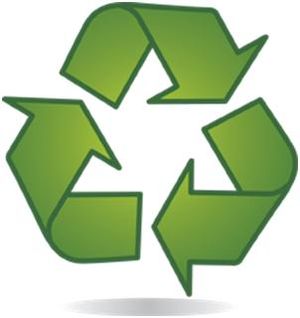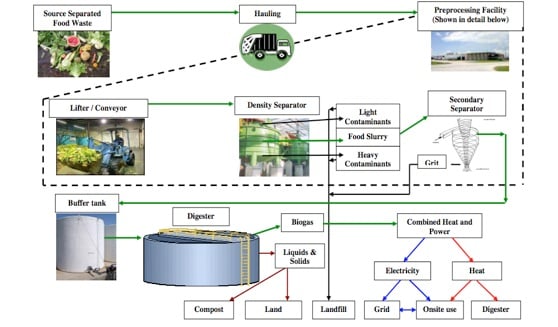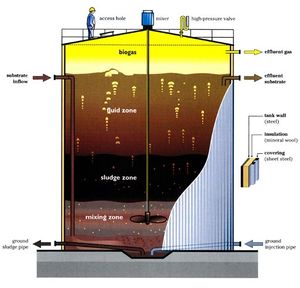No edit summary |
Aaron Gallo (talk | contribs) No edit summary |
||
| Line 5: | Line 5: | ||
== Introduction == | == Introduction == | ||
In 2010 HSU disposed roughly 900 tons of waste a year, some of which can be diverted from the landfill to meet Assembly Bill 341’s requirement of 75% diversion by year 2020. To meet that goal, the campus is aggressively looking for more ways to reduce, reuse, and recycle. This project is intended to create a possible solution for diverting additional waste from the landfill in order to meet this goal. | In 2010 HSU disposed roughly 900 tons of waste a year, some of which can be diverted from the landfill to meet Assembly Bill 341’s requirement of 75% diversion by year 2020. To meet that goal, the campus is aggressively looking for more ways to reduce, reuse, and recycle. This project is intended to create a possible solution for diverting additional waste from the landfill in order to meet this goal. | ||
As an early adopter to the HWMA pilot study the Department of Sustainability along with Waste Reduction and Resource Awareness Program(WRRAP) will be collecting food waste from two main cafeterias to determine the mass and volume generated on campus. The data will help as HWMA is preparing to bring a municipal anaerobic digester online as early as January 2012. | As an early adopter to the HWMA pilot study the Department of Sustainability along with Waste Reduction and Resource Awareness Program(WRRAP) will be collecting food waste from two main cafeterias to determine the mass and volume generated on campus. The data will help as HWMA is preparing to bring a municipal anaerobic digester online as early as January 2012. | ||
[[File:Bio_Digester_Block_Diagram.jpg|right|Process Flow Diagram for a food waste digester. Green arrows are organic material flow, the black arrows follow contaminant flows, and the brown, blue and red arrows show end products]] | |||
[[File:Anaerobic_digester_diagram.jpg|thumb|left|An image of the anaerobic digestion process taking place in a synthetic bio-digester to create methane gas.]] | |||
Anaerobic digestion is the decomposition of organic matter by microorganisms in an oxygen free (anaerobic) environment, creating biogas, residual solids and liquids <ref>(Bohn, et al., 24, 51)</ref> The biogas will be used to power the actual digesting plant, thereby reducing HWMA’s dependence on electricity and their Greenhouse Gas Emissions (GHG’s). The residual solids and liquids are nutrient-rich and valuable soil amendments, with the possibility of providing an additional source of revenue for the facility <ref>(Bohn, et al, 52)</ref>. | Anaerobic digestion is the decomposition of organic matter by microorganisms in an oxygen free (anaerobic) environment, creating biogas, residual solids and liquids <ref>(Bohn, et al., 24, 51)</ref> The biogas will be used to power the actual digesting plant, thereby reducing HWMA’s dependence on electricity and their Greenhouse Gas Emissions (GHG’s). The residual solids and liquids are nutrient-rich and valuable soil amendments, with the possibility of providing an additional source of revenue for the facility <ref>(Bohn, et al, 52)</ref>. | ||
== Understanding the Market == | == Understanding the Market == | ||
Revision as of 23:36, 13 December 2011

Introduction
In 2010 HSU disposed roughly 900 tons of waste a year, some of which can be diverted from the landfill to meet Assembly Bill 341’s requirement of 75% diversion by year 2020. To meet that goal, the campus is aggressively looking for more ways to reduce, reuse, and recycle. This project is intended to create a possible solution for diverting additional waste from the landfill in order to meet this goal. As an early adopter to the HWMA pilot study the Department of Sustainability along with Waste Reduction and Resource Awareness Program(WRRAP) will be collecting food waste from two main cafeterias to determine the mass and volume generated on campus. The data will help as HWMA is preparing to bring a municipal anaerobic digester online as early as January 2012.


Anaerobic digestion is the decomposition of organic matter by microorganisms in an oxygen free (anaerobic) environment, creating biogas, residual solids and liquids [1] The biogas will be used to power the actual digesting plant, thereby reducing HWMA’s dependence on electricity and their Greenhouse Gas Emissions (GHG’s). The residual solids and liquids are nutrient-rich and valuable soil amendments, with the possibility of providing an additional source of revenue for the facility [2].
Understanding the Market
There are many institutions that have incorporated a paper towel diversion program. There are several solutions to reducing or recycling paper towels.
The following compost their paper towels:
This is where you can describe what already exists, what is needed, etc. You may want to include inline references. [3]
To make bullets use the asterisk:
- Like this
- and like this
- and two for the next indent
- and back to one...
Project Goals
Describe project goals here.
To make a numbered list use the pound sign:
- Like this
- and like this
- See Help:Contents for more formatting code.
Design
Describe your design here.
- Sample gallery
-
Sample caption text.
-
More sample caption text. This would look better with different images. :)
-
Even more sample caption text.
next level heading
You may need deeper level headings. Just keep adding equal signs to get that.
Costs
You may describe your costs here.
| header 1 | header 2 | header 3 |
|---|---|---|
| row 1, cell 1 | row 1, cell 2 | row 1, cell 3 |
| row 2, cell 1 | row 2, cell 2 | row 2, cell 3 |
See Help:Tables and Help:Table examples for more.
Discussion
Your discussion.
Next Steps
The next steps.
Conclusions
Your conclusions.
References
- ↑ (Bohn, et al., 24, 51)
- ↑ (Bohn, et al, 52)
- ↑ You can use the ref code to include inline references. See Help:Footnotes for more.
Contact details
Add your contact information.
